Last Updated on July 20, 2022
What is the Purpose of Steel Rebar in Concrete?
There are several types of rebar for concrete applications. Many concrete applications include rebar, often known as steel reinforcement bar. Its major purpose is to improve the tensile strength of the concrete, which helps in its resistance to cracking and breaking. Concrete with a higher tensile strength is more resistant to breaking under stress.
Concrete is a very durable and strong material. Concrete works especially well under compressive stress but it requires help to resist the weight of tension stresses such as weight in the middle of a beam that is supported on both ends. Tensile strength is not one of concrete’s best properties. Concrete may also require support against the natural expansion and contraction stresses caused by temperature changes. This is where rebar comes in. What is under the concrete’s surface is as significant as what is visible on the surface of concrete.
What is Steel Rebar?
Steel rebar is manufactured of hot-rolled steel in various gauges and is used to reinforce concrete for tensile and flexural stresses. It’s often placed in a grid pattern in slabs or used as parallel strands in beams and columns. Without exceeding the codes’ limits, the more it is used in a section, the more strength the section has.
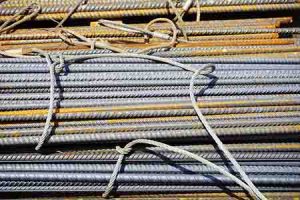
The steel rebar for concrete increases the concrete’s capacity to resist forces or stresses applied horizontally or vertically to it. It distributes the stresses across the concrete area rather than allowing them to concentrate at a point and crack. Steel reinforced concrete is significantly stronger and more stable than unreinforced concrete. Because of the ridges that help it to form bonds with the concrete, rebar for concrete is often known as deformed steel.
Types of Rebar for Concrete in Civil Engineering
1. Carbon Steel Rebar
The most common type of steel rebar is carbon steel rebar (“black” bar). In reinforced concrete and reinforced masonry buildings, rebar is often utilized as a tensioning mechanism to hold the concrete in compression. Furthermore, because it is an easily formed material, carbon steel rebar has also gained popularity in the field of metal crafts.
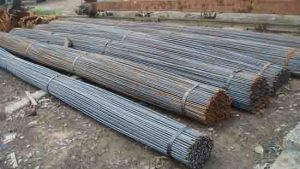
The most significant problem of black rebar is that it corrodes. When rebar corrodes, it expands and cracks the concrete surrounding it. There are better alternatives than black rebar for situations where the rebar may be subjected to humidity or water saturation. Black rebar, on the other hand, is the best steel rebar alternative available in terms of value-tensile strength ratio.
2. Galvanized Steel Rebar
Galvanized reinforcing steel is bare reinforcing steel that has been coated with a zinc metal protective coating. The zinc coating protects the steel rebar from corrosive elements when it is placed in concrete. In addition to the barrier protection provided by zinc, it also offers cathodic protection, as zinc will preferentially corrode when in contact with bare steel. When galvanized coatings are implemented in concrete, they exhibit additional corrosion-resistant properties which are making them an excellent corrosion-resistant coating material.
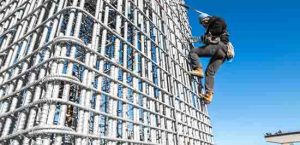
Before coating bare reinforcing steel with zinc, it must first be cleaned by immersing it in some solutions that remove oil, dirt, oxides and other contaminants from the surface. Zinc is applied to clean steel by immersing it in a bath of hot liquid zinc at 450°C or 830°F. The steel is then allowed to cool before being inspected for compliance to the necessary specifications.
3. Fiberglass Rebar
Fiberglass rebar is a spiral wrapped structural reinforcing rod made of fiberglass roving and resin. Fiberglass rebar was developed as a superior alternative to steel in concrete reinforcement for applications needing a lightweight material with high tensile strength, non-conductive and non-corrosive characteristics. For example, appropriately reinforced fiberglass rebar concrete slabs exposed to heavy traffic, such as bridge decks and driveways, last around 20 times longer than traditional techniques.
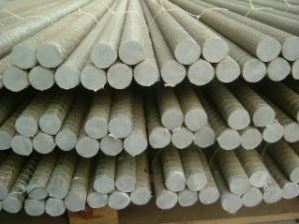
Pultrusion is applied in a continuous process to manufacture glass fiber reinforced rebars. Highly qualified glass fibers, resin from polyester or vinyl ester, and a typical fiber content of 75% are utilized. When compared to steel, fiberglass rebars have double the tensile strength of steel rebars. The fiberglass rebar material exhibits linear-elastic behavior up to the point of failure, which is referred to as brittle behavior. When compared to steel rebars, the weight of fiberglass rebars is quarter of steel rebars. The nominal diameters of fiberglass rebars range from 8 mm to 38 mm. Angles and bends come in a variety of forms, such as 2D or 3D shapes, like the ones of steel rebar.
4. Basalt Rebar
Basalt rebar is an effective choice for concrete reinforcement. It weighs four times less than steel rebar and has three times more tensile strength. Pultrusion technique is applied to produce basalt rebars from basalt fibers. The surface is sanded and shaped. This type of surface preparation improves concrete adherence.
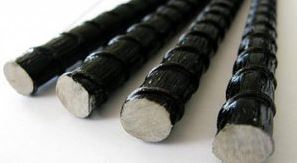
Basalt rebar can resist corrosive environments. Steel materials, on the other hand, experience normal corrosion. As a result, at least 4 cm of concrete layers are required to protect the steel reinforcement. This covering layer is decreased to 1 cm in the case of basalt rebar concrete. This saves concrete and allows for a lighter structure.
Basalt rebar is obviously suitable for usage as a replacement for both steel and fiberglass rebar. It is still somewhat more expensive than steel, therefore it is being utilized initially in places where steel has disadvantages. When regulatory restrictions are resolved, it may soon replace stainless steel and epoxy-coated steel on a cost-effective basis. It has the potential to replace steel rebar since its cost decreases with manufacturing volume. Its non-corrosive nature offers it a significant advantage over steel. Steel in a concrete structure is clearly a rust-spalling failure waiting to happen.
5. Stainless Steel Rebar
The benefit of stainless steel is that it corrodes at an exceptionally slow rate in a concrete environment. During a service life of 75 years, minimum corrosion damage is expected to occur. Although it is significantly more expensive to acquire than black or epoxy-coated reinforcing steel, it is more cost-effective in the long run since the corrosion damage seen with black and coated steel will not occur.
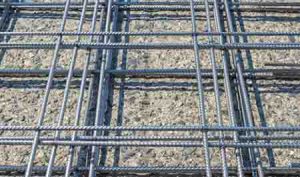
When rust becomes a higher volume than steel, it causes the concrete to crack, allowing more salt-laden water to reach faster and deeper into the concrete structure. To avoid the structure’s eventual catastrophic failure, costly and extensive renovation becomes necessary, which is generally very disruptive in cities and important highways.
6. Epoxy-coated Rebar
To reinforce the concrete and prevent it from corrosion, epoxy coated rebar or corrosion resistant rebar is used instead of ordinary reinforcing bars. To guarantee corrosion resistance, the epoxy coating is applied to the steel at a factory before to delivery. Corrosive concrete can benefit from the use of epoxy-coated steel reinforcing bars. Exposure to deicing salts or sea waters is one example for the places where epoxy coated rebars may be used at.
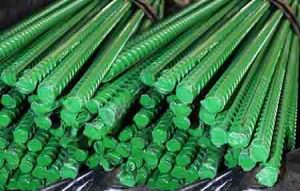
The integrity of the epoxy coating determines the efficiency of epoxy-coated rebar. The underlying steel is exposed if the epoxy is chipped or otherwise damaged. Corrosion can begin with a small amount of damage. Once rust begins to develop, it pushes its way beneath the remaining epoxy, destroying the covering completely. As a result, contractors must take caution while transporting and installing epoxy-coated rebar. Similarly, contractors must take caution when it comes to where and how the rebar is stored. The epoxycoating is still highly prone to ultraviolet radiation and will quickly deteriorate if exposed to UV for an extended period of time. When storing epoxy-coated rebar outside, contractors should always use a UV-impermeable tarp or other type of protection. Temperature during installation is another important factor. When handling epoxy-coated rebar at temperatures below 50 degrees Fahrenheit or 10 Celsius, the epoxy coating can crack.
7. European Steel Rebar
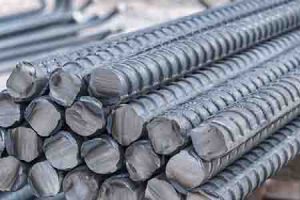
The expense of European rebar is its strength. European rebar, which is mostly made of manganese, is the least bending resistant form of rebar. While it is simple to work with, it is not advised to use in earthquake-prone locations or for projects requiring significant structural strength from its rebar.
8. Mild Steel Rebar
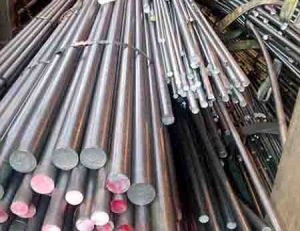
The surface of the mild steel bar is plain and rounded. They are available in a range of diameters ranging from 6 mm to 50 mm. They are utilized in concrete for a variety of applications, including dowels at expansion joints where bars must move through a metal or paper sleeve, contraction joints in highways and runways, and column spirals. They are simple to cut and bend without causing damage. Mild steel bar is not recommended for structural projects such as bridges and other large structures due to poor bonding between concrete and steel, and strength.
What is the purpose of deformed bars?
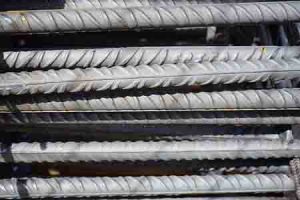
For complex or large projects, deformed rebar is the typical steel used in reinforcing concrete. It is the type tested and slightly rusty bars of known diameter that are added to concrete to improve the quality of tensile strength that is less in large pours of concrete. Other smooth bars can be utilized but the gold standard for concrete reinforcement is the deformed bar, which has a larger surface area and out jottings for the cement silane chemicals to adhere to and attain the specified strength of the concrete. It prevents movement in freeze/thaw environments and will survive the intended life-span with proper concrete covering and placement in the lowest third of a slab application.
What is welded wire mesh?
Welded wire mesh is made of two orthogonal wires welded together at their intersections by a resistance welding technique to produce a grid. A pattern board guides the grid’s line wires with the welder. The machine inserts cross wires and fuses them together to generate the two different planes that make welded wire mesh.
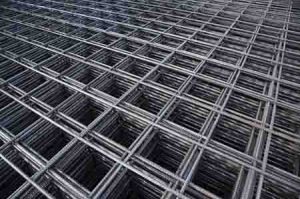
This type of reinforcement complements concrete just as well as the others but it is best suited for lighter jobs. Expanded metal is often utilized to strengthen light concrete structures or where a substantial thickness of plaster is required. If there’s a concrete work to be done, there’s rebar for it.
What is the difference between steel rebar and wire mesh?
Thin steel bars are connected together to form wire mesh, which has a grid-like design. Before the concrete is poured, these sheets are positioned and cut to size on the construction site. To keep the mesh in place, spacers are frequently used underneath it. Rebar, on the other hand, is produced as single bars and with various thicknesses. They are processed by cutting them to the required size on the construction site. To prevent their position from any change during the concrete pour, these rebars are placed in place and tied together with wire before pouring begins.
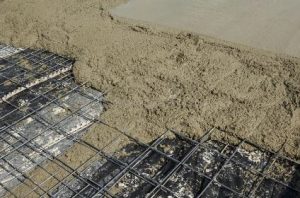
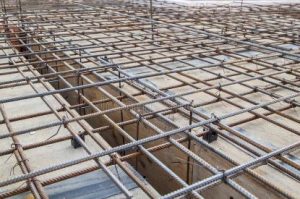
Wire mesh is only appropriate for horizontal slabs, whereas steel rebar can be used in any construction that is concrete poured at any angle. Since wire mesh composed of thin steel bars, it is typically less expensive to use than rebar. The price of rebar varies greatly and is dependent on the thickness of the bar. Although thicker rebar provides more significant support and flexural strength improvement than wire mesh, the structure may not always require this. Which of them is the better choice would be determined by the application.
What is the difference between hot rolled and cold formed steel rebar?
It is important to remember that the main difference between hot-rolled and cold-formed steel is one of the production methods. The term hot rolling refers to heat-based processing. The term cold formed refers to operations that are carried out at or near room temperature. Although these approaches have an impact on overall performance and application, they should not be mistaken with official steel standards and grades, which are concerned with metallurgical composition and performance ratings. Steels of various grades and specifications, including basic carbon steels and other alloy steels, can be hot rolled or cold formed.
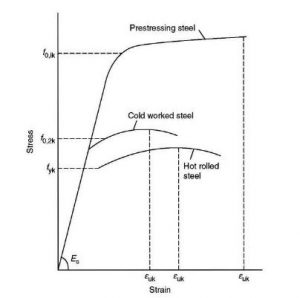
Different kinds of steel are better suited for specific purposes. Knowing which to utilize might help you save money on raw materials. It can also help you save time and money on extra processing. Understanding the difference between hot and cold steel is important when deciding which to use. Cold formed steel has more tensile strength than hot rolled steel but it is brittle and have very low strain hardening process. On the other hand, hot-rolled steel exhibits ductile behaviour and have considerable strain hardening process which is desired in a structure in case of a failure.
How Steel Rebar is Produced?
Steel is melted to liquid form, which takes a great amount of heat. Once melted, the liquid steel is drawn through small round holes to form the rebar. While unpainted steel is the least expensive type of rebar, some applications require epoxy-coated or stainless steel. The reason for this is, as we discussed above, because rust can occur when rebar is exposed to salt water for a long period of time, which can eventually lead to a buildup of internal pressure, causing the concrete form to crack. Because this is not an economical or safe long-term alternative, most developers will prefer to acquire higher-grade material.
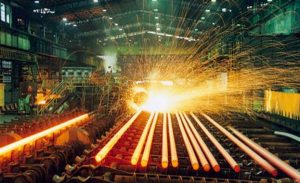
Once the steel has been appropriately formed, the producer will twist and groove the metal to ensure it remains firmly in place inside the reinforced concrete member. Because these strengthened metal bars are highly dangerous to install, their ends are usually covered with plastic covers to protect construction workers from injuries. Rebar is frequently delivered directly from the factory to the construction site, however contractors can arrange for delivery if necessary. The product will need to be bent to the correct specifications once it arrives on site. Specialty hydraulic benders and cutters are used to accomplish this. Since only specific types of rebar can be welded, many construction companies use wire and coupling splices to connect the ends.
What are the sizes of steel rebar?
European metric rebars are available in a variety of sizes, including 6 mm, 8 mm, 10 mm, 12 mm, 14 mm, 16 mm, 20 mm, 25 mm, 28 mm, 32 mm 40 mm and 50 mm. Additionally, they can be modified to meet customer needs.
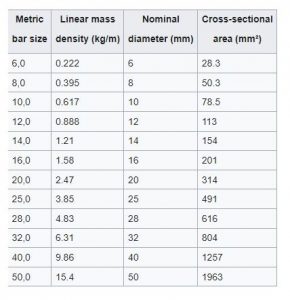
What are the grades of steel rebar?
We can classify different steel types depending on the various uses and steel grading systems. For instance, how quickly steel is cooled during production may affect its molecular strength. A significant factor in the cooling process is also how long steel is kept at critical temperatures. In fact, depending on the heat-treatment method used, two steel sheets with the same alloy content may have different grades.
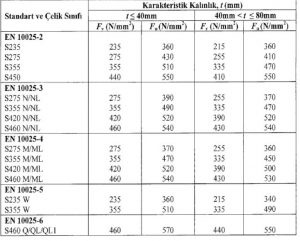
Engineers, architects, government organizations and scientists frequently utilize steel grading standards to guarantee the consistency and quality of products. These standards offer a single vocabulary to express the characteristics of steel with various specificity and guide product manufacturers toward appropriate processing and application techniques.
What are Stirrups and Ties?
1. Stirrups
These are the steel bars that are vertically positioned around the tensile reinforcement at appropriate intervals along the length of the beam. Their sizes range from 6 mm to 16 mm. The free ends of the stirrups are secured to the anchor bars (hanging bars) or the compressive reinforcement in the compression zone of the beam. It is preferable to use closely spaced stirrups to prevent diagonal cracks. Stirrup spacing near the supports is shorter than that in the mid-span because shear stress is greatest at the supports.
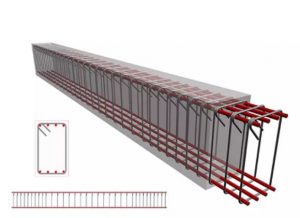
A shear fracture may occur that is 45° to the horizontal that originates at mid-depth near the support and extends towards the top and bottom. Shear failure is brittle and should be avoided. Stirrups are used to resist shearing force and keep the longitudinal bars from bending outward.
2. Ties
Linear structural components meant to withstand stress include ties, straps, tie rods, guys wire, suspension cables and wire ropes. They are the inverse of column which are intended to resist compression. Any tension-resisting material may be used to make the tie. Ties are continuous tensioned reinforcements that are mechanically or weldably anchored and lapped adequately.
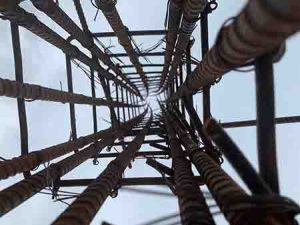
Connecting ties that offer a continuous structural load transfer path from the building’s top to its base, therefore protecting the structure. The longitudinal bars might be as long as 12 meters and sway at random if not connected. So we may conclude that lateral reinforcement was utilized to connect individual bars together, hence the name tie.
Rebar for concrete has been explained in this article, hope you enjoyed it!

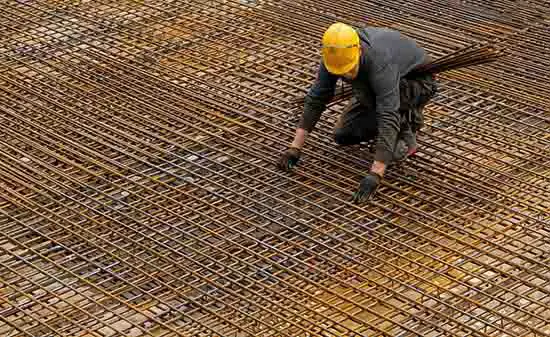
Pingback: What is a Shear Wall in Construction Sector? | techyildiz